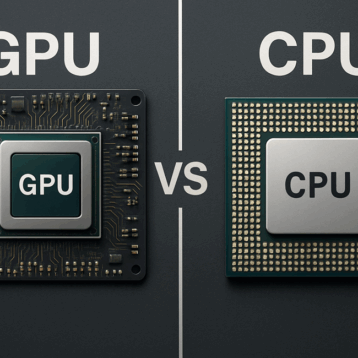
The technological revolution is innovating our lifestyle. From how we work to how we entertain ourselves, our lives have undergone drastic changes in the past few decades. One of the most talked about developments today is Artificial Intelligence (AI).
AI is the new computer science technology that focuses on creating intelligent machines to perform tasks and activities that typically require human intelligence, such as speech recognition, visual perception, decision-making, and language translation. AI has deeply impacted our lives, making the world more efficient, smarter, and faster.
You don’t need to hire mobile application developers, as some AI applications can be used to create your mobile applications. Moreover, AI can be used to automate mundane tasks, create new products and services, and enable us to understand the complexities of the world around us. In this blog post, we’ll discuss why AI has become so popular and how it works. So, let’s get into it.
What is Artificial Intelligence (AI)?

AI (Artificial Intelligence) is a type of technology that enables a machine to learn, reason and act in the same way as humans. These processes include learning, problem-solving, and self-correction. AI can study and analyze data, interpret information, make decisions, recognize patterns, and predict the future. AI typically involves machines executing predetermined programs and algorithms to perform specific tasks, such as playing chess or recognizing spoken language.
AI has been around for over 50 years, but it’s only recently that its potential has been fully explored. It has become increasingly popular due to advancements in computing power and the availability of large datasets. With this technology, you no longer need to hire developers or content creators. AI technology mimics the behavior of a human being and can make decisions on its own without any human intervention.
How Does AI Work?
AI works by utilizing algorithms to find patterns in data and use them to make decisions. It can be used to predict future outcomes by analyzing trends in existing data and leveraging that information to make decisions. During its operations, AI systems combine and process data from multiple sources, such as text, images, sensor data, audio files, or video.
Machine learning algorithms are especially effective when it comes to dealing with large amounts of data or data that is constantly changing. AI can be used for various tasks, from basic to complex ones. It can also be used for more complex tasks, such as natural language processing (NLP) or facial recognition.
Its deep learning capabilities make it possible to identify patterns, recognize speech, and make predictions.
Moreover, this advanced capability of AI, especially when integrated with neural networks, facilitates sophisticated text generation tasks, allowing machines to produce human-like written content autonomously.
AI systems can also learn from their mistakes and adjust to become more accurate and efficient. The interaction between computers and humans enables AI to mimic human intelligence and can act as an assistant to humans, helping them to make better decisions.
Check out this amazing article on What is artificial intelligence, It’s Type and How it works for more understaing.
What are the Types of AI?
AI is a vast industry with several types. Following are some of the most popular categories of AI solutions:
Reactive Machine AI
This type of AI can perceive its environment and react to it. It can make decisions but cannot remember past events or experiences. It is the basic form of AI and is mostly used in entertainment, such as games or robots. It can’t store memory or learn from its experiences. Such AIs are designed to fulfill only a single purpose and can only react to their environment and the inputs it receives. This type of AI lacks the ability to learn.
Limited Memory AI
These AIs can remember past experiences or events and use that data to inform their present decisions. This type of AI is useful for recognizing patterns and making predictions and recommendations. It can also be used to improve customer service by providing personalized experiences. This type of AIs has more complicated algorithms and is used in autonomous vehicles, voice recognition systems, and facial recognition systems.
Teams of experts train such AIs to analyze large datasets and recognize objects. The machine learning steps involved in this type of AI are reinforcement learning, recurrent neural networks (RNN), evolutionary generative adversarial networks (E-GAN), transformers, and spatial-temporal recurrent neural networks (ST-RNN).
Theory of Mind AI
Such AIs are complex, and our technology needs to be advanced enough to bring such AIs into reality. They will be capable of understanding other agents’ mental states and feelings. This type of AI is designed to interact with humans and can form relationships and make decisions based on emotions, beliefs, and values.
They will learn the emotions of humans, animals, and other machines and use that data to make decisions. They will also be capable of understanding natural language and be able to interact with humans using a conversational interface.
Self-Aware AI
This type of AI will be the most advanced and is still a long way off from becoming a reality. Such AIs will be capable of understanding their own environment and making decisions based on their understanding. They will be able to learn from their mistakes and refine their algorithms to become more efficient and accurate.
These AIs can understand the world around them, learn from it, and form relationships with humans. They will be able to predict the future and make decisions with higher accuracy.










